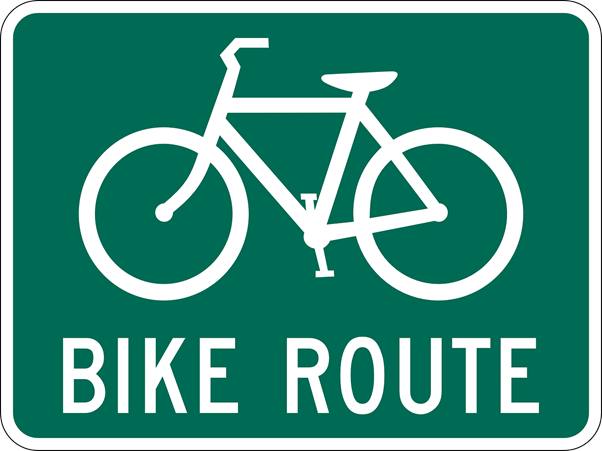Economy & Business
Is urban mobility suffering a Covid hangover?
The pandemic has introduced a new dynamic into mobility planning, with profound changes in attitudes to travel in the world’s cities.
By Mike Jewell
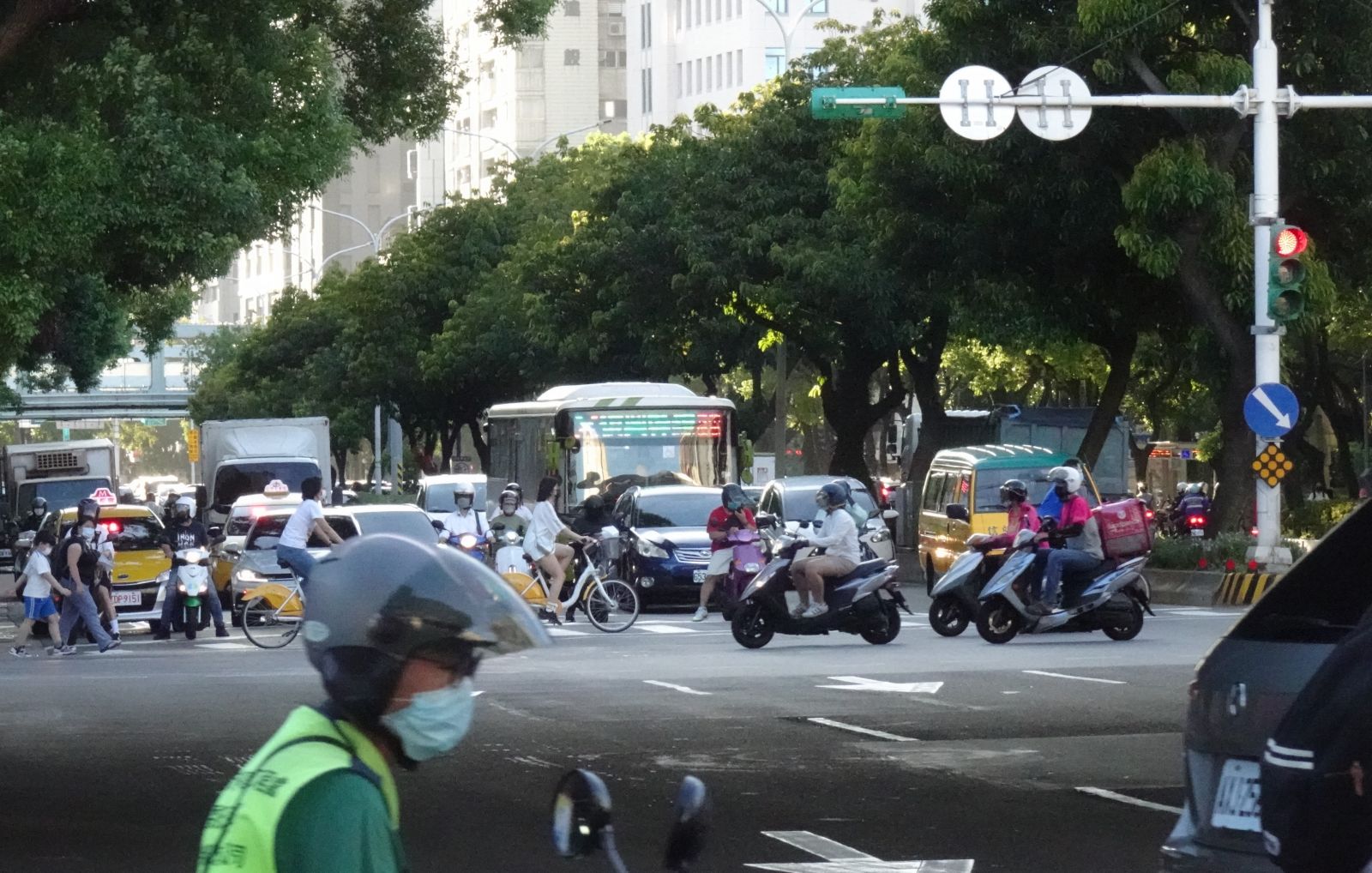
Mobility, especially in the world’s great cities, has been one of the hottest topics around in recent years, as businesses, legislators and ordinary people try to come to terms with the realities of societal, technological, and meteorological change.
By 2030, the world’s urban population will swell by 20% and, for the first time ever, there will be more urbanites than rural dwellers, all clamouring for their fundamental right, the right to move around.
However, existing urban infrastructure cannot support such a rise in people numbers. Congestion is already close to unbearable in many cities and can cost as much as 2-4% of national GDP, by measures such as lost time, wasted fuel, and increased costs of doing business, while the psychological strain on individual drivers is incalculable. According to TomTom’s traffic index, in 2019 (i.e., before Covid, which changed everything) millions and millions of hours went down the drain every day, as commuters sat helpless in traffic. Bengaluru topped the list of the world’s most gridlocked cities, with each driver giving up 243 precious hours to congestion. Put another way, that’s 10 whole days sitting in traffic jams. Close behind were Manila, Bogota, Mumbai, and Pune.
Car-loving US drivers fared little better. In LA, the worst American city for congestion, drivers spent a whole week going nowhere fast and major European cities have their problems, as well, even more progressive centres like Amsterdam and Copenhagen. Here in Taiwan, rush hour journeys in the major cities take about 35% more time than off-peak trips, adding up to more than 100 lost hours per year.
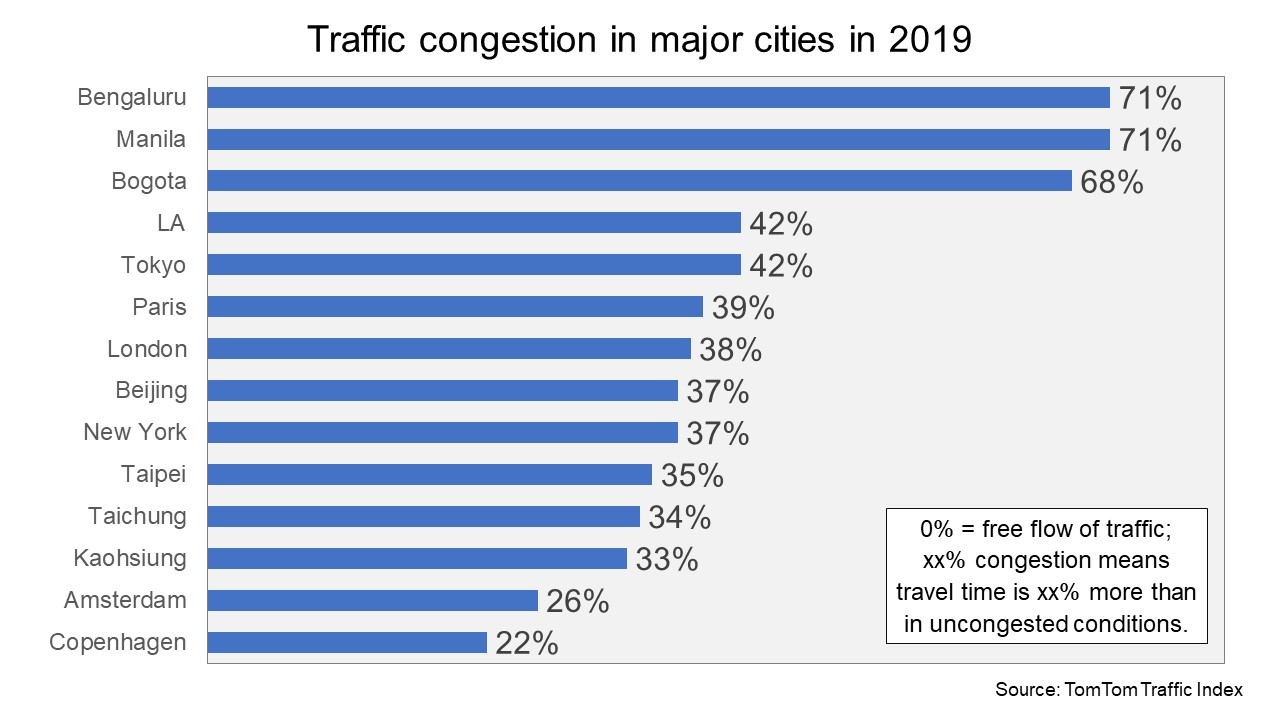
Time loss is not the only issue. Transportation generates greenhouse gases; and spews out smog which presents serious public-health concerns. The World Health Organization has estimated that seven million premature deaths a year are attributable to air pollution, a significant portion being the result of urban transit.
Successfully integrating mobility across vast, complex urban environments is a huge challenge for all stakeholders, but it has the potential to secure the future prosperity and wellbeing of citizens and the cities in which we live, work and travel through each day.
Changing urban mobility patterns pre-Covid
Several distinct trends were evident in behaviour and attitudes to urban travel before Covid reared its head, underpinned by a marked desire for change and it’s worth looking at these before examining how the pandemic has introduced a new dynamic, accelerating some trends, and reversing others.
In 2019, global data, insights and consulting company Kantar published “Mobility Futures”, an analysis of actual and anticipated behavioural change over the period 2017-2030, derived from interviews with 20,000 people in 31 cities and a clear narrative emerged as to how people currently travel in and around the city and how they would ideally want to travel.
For the moment private cars are used most often, ahead of all other types of transport combined, but the mood is changing. Over 37% of solo car commuters expressed a strong desire for alternative means of travel, with many preferring to be passengers rather than drivers, to make better use of the travel time and reduce the stress of sitting stationery behind the wheel. By 2030, the expectation is that more environmentally friendly modes of transport will be much more the norm. Kantar saw more people wanting to walk, rideshare, carpool or cycle, and projected that up to 25% of travellers will change the way they move around, with a 10% drop in car journeys.
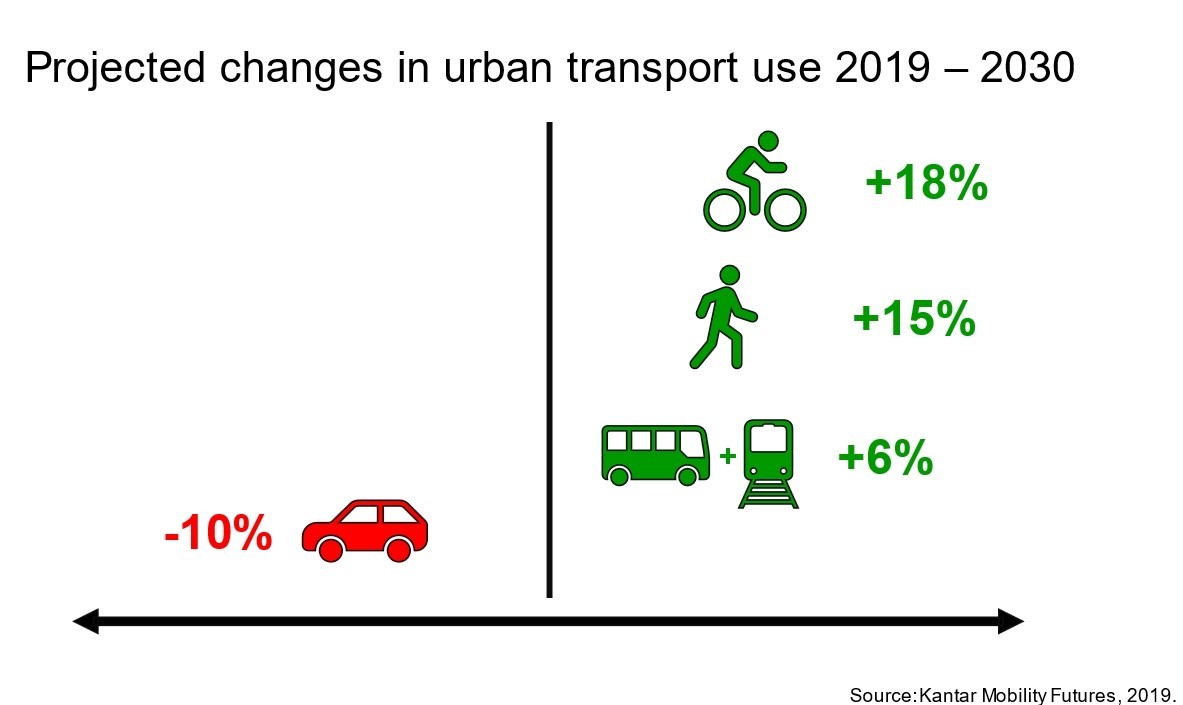
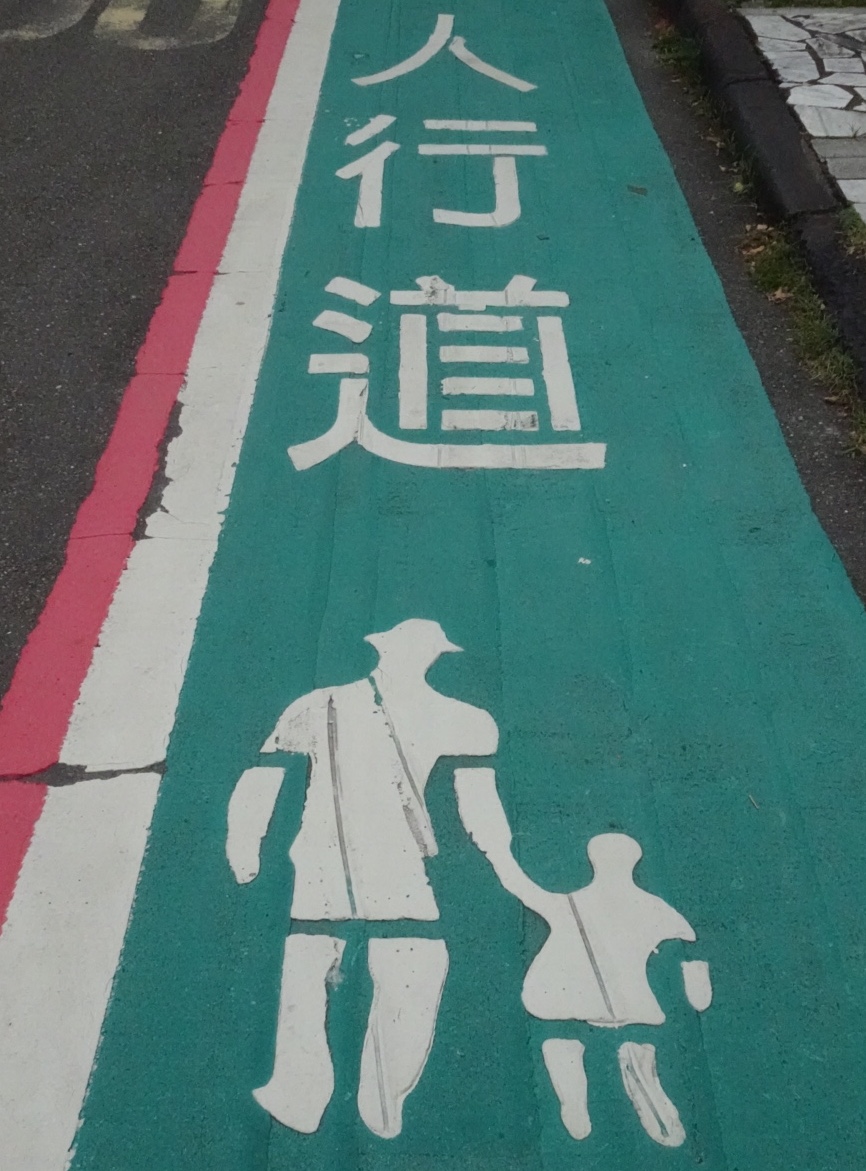
Public transportation as well as an increase in bicycle and pedestrian traffic will shape the image of many major cities in 2030, but a prerequisite for managing this shift is the intensive expansion of public transport facilities and of bicycle lanes and sidewalks/footpaths, with billions of dollars needing to be invested in new development and upgrades in order to attain this level.
Travel choices are as much about emotion as rational considerations
Like any decision, emotion plays a crucial part in choosing how to get around. People are more likely to use modes of transport that bring a little bit of delight into their daily commute and become a lifestyle choice rather than just a way to get around.
The Kantar survey revealed that two-wheeled transport, both powered and unpowered, was the most satisfying way of getting around, along with plain old walking.
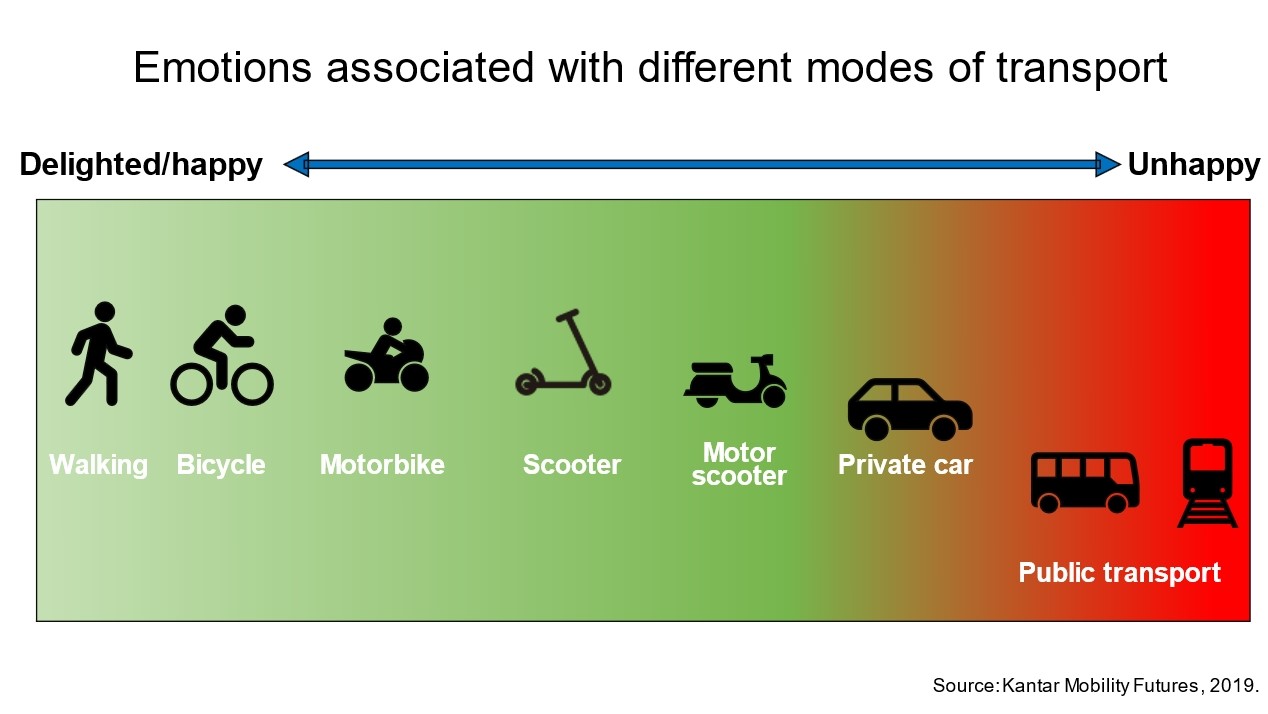
Cities are well-placed to respond to this trend and delight their citizens by providing more cycle lanes and rewarding riders of low-emission or electric motorcycles and scooters. This will benefit the environment and will also have an uplifting effect on the collective mood of its citizens. These vehicles take up much less space than cars, so it also helps to address the issues of densification and scarcity of space. Promising a happier life is a compelling proposition for municipalities keen to improve quality of life for their inhabitants. Gaining a reputation for being a great place to live will attract the brightest minds into the local workforce, while improving the mental and physical health of those already living there.
Public transport, on the other hand, urgently needs a makeover. Currently it provides the lowest levels of positive emotion across the global urban landscape and 43% of regular riders would gladly switch to something else if the opportunity arose.
Sharing instead of owning
Experts believe that shared services are a substantial opportunity for the future of urban mobility and Mobility Futures found an appetite for sharing in most cities. There are a number of established manifestations of shared mobility and others are under development:
- Car sharing: short-term rental through providers like car2go and Zipcar
- Carpooling: sharing the journey so there’s more than one person in the car
- E-hailing/ ride-hailing: riders order a car to pick them up via a virtual device
- Pooled e-hailing: riders order car service via their mobile device and share rides with other passengers
- Peer-to-peer (P2P) car sharing: car owners allow other drivers to use their vehicles for a charge
- P2P ridesharing: private-car owners drive paying passengers to their destination, mainly long distance.
- Shared micromobility: very light vehicles (for example, kick scooters, bicycles, or electric scooters) offered for shared use to the public for a fee, either free-floating or station based.
- Aerial mobility: flying taxis (powered by electricity or new energy) move people by air between dedicated stations, either piloted or semiautonomous.
- Robo-taxis and shuttles: robo-taxis and shuttles serve the same function as e-hailing and taxi services but employ autonomous-driving technology rather than human drivers.
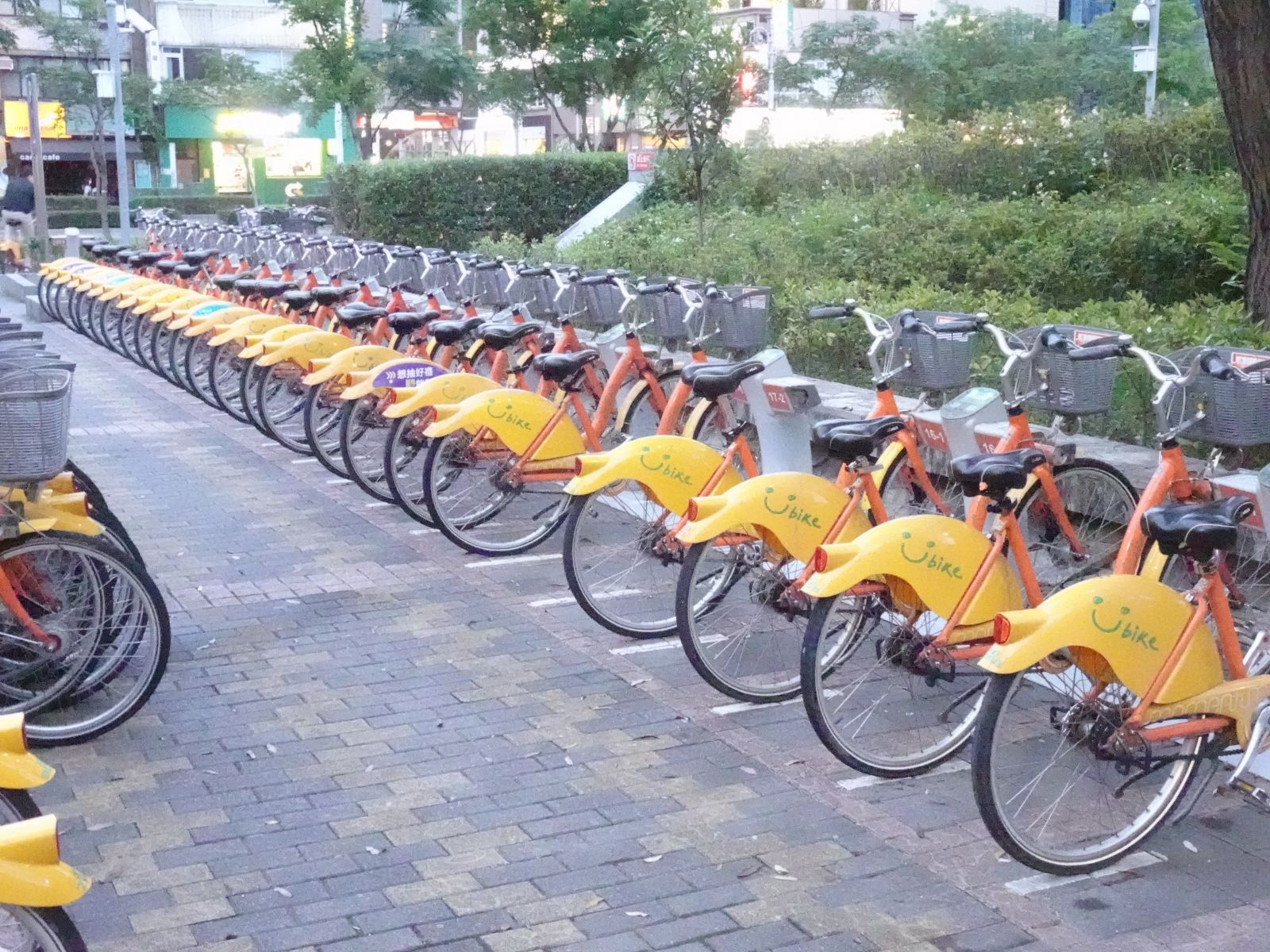
Urban mobility – the story so far
The pace of change across the planet differs sharply between regions, as various consultancies have documented. In 2017, Cebr, Centre for Economics & Business Research Exploration published the following conclusions:
- European cities are leading the way, thanks to a mixture of innovative transportation schemes, intelligent use of technology and an advanced approach to incentivising people to change habits.
- Asian cities are among the most visionary in their approach, showing a particularly strong desire to create smart, connected cities filled with driverless EVs and public transport, but grave air pollution concerns mean they face a long road ahead
- Progress in North America is being held back by a reluctance to embrace change, with continuing attachment to private, polluting vehicles. Low fuel costs and a tangled federal, state and city legislative framework combine to leave North America in a position where citizens have a mixed level of incentives to change their habits
- South American cities are still in early stages of introducing low emission measures to transport systems and their pace of progress is slow.
- For African cities, achieving zero emissions is not a priority, with little evidence of a desire for change either at a governmental or citizen level.
A year later, Arthur D Little (ADL) and the International Association of Public Transport (UITP) published ‘The Future of Mobility 3.0’ and generated an Urban Mobility Index for 100 cities (sadly, not including any from Taiwan, but what’s new?) right around the world.
ADL assessed the mobility maturity, innovativeness and performance of each city using a broad framework of 27 measures. The overall results find that most cities still need to work intensively on improvements to their mobility systems if they are to cope with the challenges ahead. The global average score of the 100 cities surveyed is just 42.3 out of a possible 100 points and only 10 cities scored more than 50 points, with the best being Singapore at 59.3. Even the highest-ranking cities have considerable potential for improvement.
The overall pattern was similar to what Cebr had observed, with European cities generally further along the path of development, US cities dragging their heels and emerging countries having much further to go.
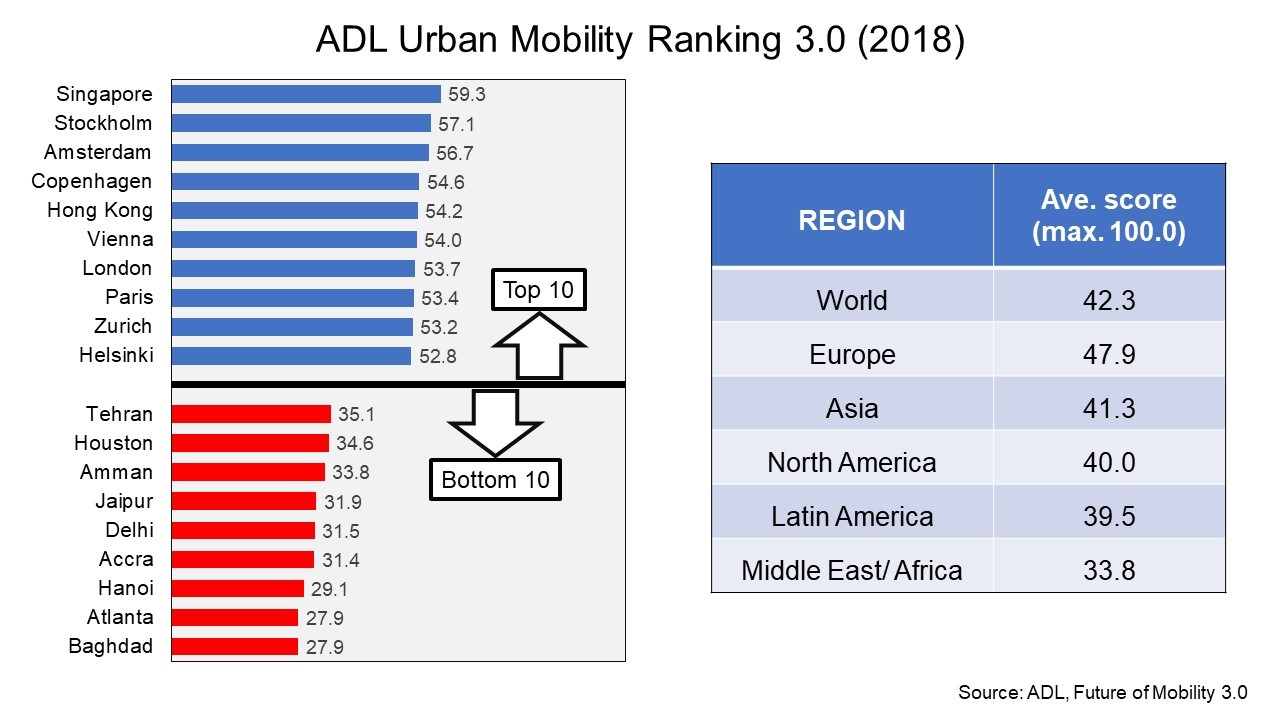
Then along came Covid
The onset of the pandemic last year shook the world of urban mobility to its core and continues to do so, with no end in sight. Travel patterns have changed massively, partly because of enforced restrictions on movement, but also as a result of the pandemic’s impact on public attitudes. The extent to which these changes endure as some form of normality returns will be crucial in determining the future course of the evolution of urban mobility.
Kantar updated “Mobility Futures” early this year and the extent of the impact of Covid was immediately obvious. As Covid struck, daily mobility came to a halt, with a massive decline in the number of trips made in major cities. The data show a 30% drop in travel volume to work, places of education and leisure activities. Lives have become centred around the home. People work at home, shop nearby, walk nearby and travel less, so, while commuting dropped off, daily shopping trips stayed about the same as in 2019.
Covid-19 has fundamentally impacted working habits, but the question is how much of the work from home (WFH) culture will continue post pandemic. There has been much debate around this point and the broad consensus seems to be that a significant proportion of the urban workforce will work from home several days a week going forward. Mobility Futures found 43% working remotely on a regular basis currently and 23% expect to do so in the future, pandemic, or no pandemic. If that turns out to be the case, commuter travel will be transformed. In Taiwan, WFH passed us by in 2020, as the authorities kept the virus at bay, but it became a reality this year once the government imposed tighter restrictions. It remains to be seen how far Taiwan businesses go in following the direction being taken by other developed economies.
This new phase of localism and making shorter trips, brought about by the pandemic, may well become a more established feature of city living and give more impetus to Professor Carlos Moreno’s “15-minute city” concept, which aims to change city infrastructures, moving away from being car-centric, and offering all the amenities for people’s essential and daily needs within a 15-minute walk or bike ride.
To date not all transport modes have been equally affected by Covid. Solo car travel has gained share as the main means of travel, whereas public transport has lost out majorly. The picture in Taiwan illustrates the global trend. According to Apple’s Mobility Trends, now, some weeks after pulling back from the Level-3 alert and with most businesses working close to a normal routine, driving and walking have returned almost to pre-pandemic levels, but use of public transport is still little more than half of what it was at the beginning of 2020. Globally, commuting by oneself by car has jumped by five points to 42%.
The switch back to private cars is not hard to explain. Kantar found that 35% of people, especially older folk, felt “unsafe” on public transport during the pandemic, while 71% believed that their own car is a more protected, healthier space. Research by McKinsey painted a similar picture, with 48% of travellers saying that “reduced rate of infection” is now their major consideration in choosing how to travel, up from only 14% pre-Covid.
All this translates into a very different set of emotions, compared to two years ago. Individual forms of transport are generating more positive feelings, while travellers are shrinking from all forms of SHARED mobility, but particularly public transport, which now scores a lowly 37 out of 100 points for satisfaction, compared with walking (78/100), cycling (75/100), and driving a car (72/100).
In seeking to understand what the longer-term impact might be, it is helpful to look at people’s ideal forms of transport (as opposed to their current choices) and to understand how circumstances may have changed their perceptions.
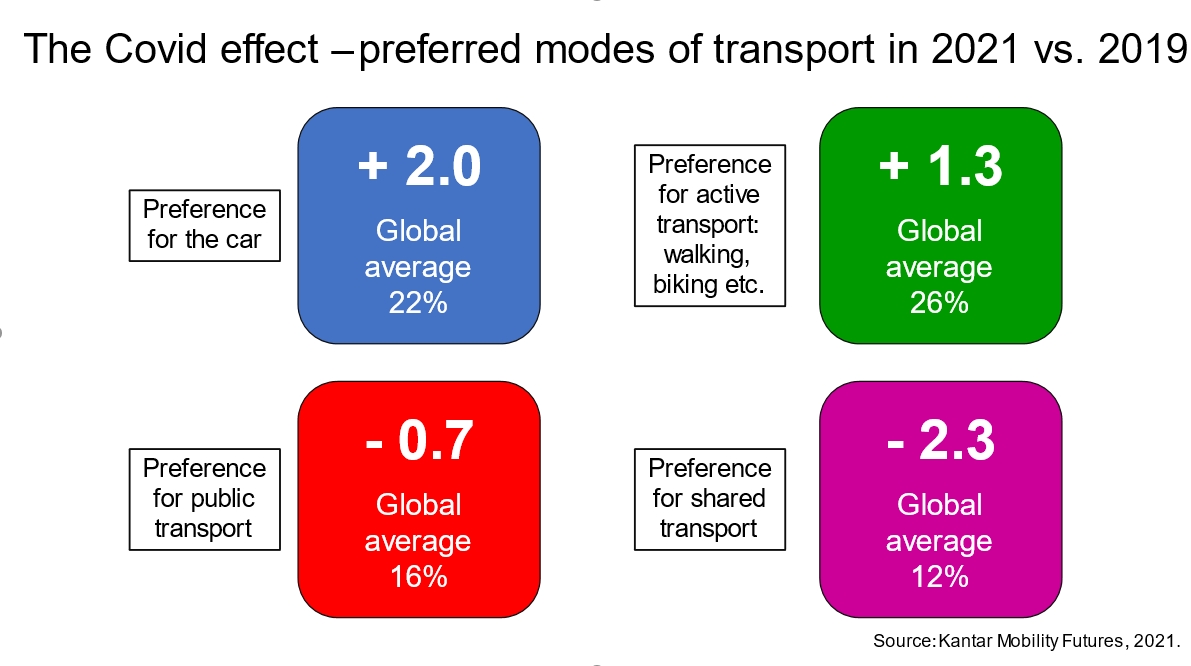
These differences in preference are not huge, but they are significant, and they follow the behavioural shifts in transport choice, with a renewed dependence on private cars, a growing focus on healthy forms of getting around and rising rejection of public transport. It is surprising that the drop in preference for public transport is not bigger, given the widespread fears about safety, so perhaps all is not yet lost, but the burden is on policy makers to act quickly and decisively to turn around the negative sentiment by taking steps to address people’s fears and significantly upgrade services.
What about the environment?
Everyone knows about climate change. Everyone knows internal combustion engines pollute our air and damage our health. Everyone knows there are too many cars on our streets. Everyone knows we should be more responsible in what we do, but…
In terms of mobility, as in so many areas, there is a massive value-action gap. Another Kantar survey found that 92% of people want to live a sustainable lifestyle, but only 16% are actually changing their behaviour. Other studies suggest that a majority are at least willing to change their behaviour, but the bottom line is that these changes must be easy and must not downgrade their standard of living.
In terms of transport, McKinsey’s research emphasises how far down the list of priorities a positive impact on the environment is, relative to more immediate issues of safety and convenience. This was the case even before the pandemic.
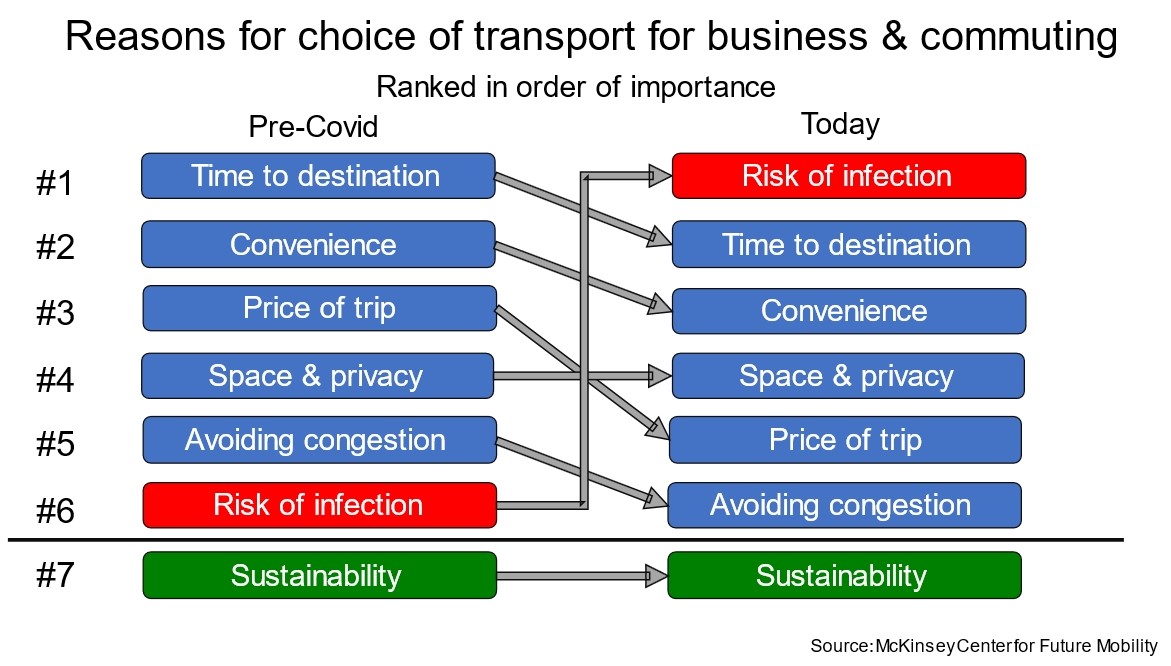
Kantar’s figures show Covid has put a brake on the move towards more environmentally friendly transport. The tendency to go back to our cars shows where our priorities lie – travelling in an environmentally friendly way has become less important. On the other hand, more people are now intending to buy electric or hybrid-electric cars in the next year, so at least there is some positive news. However, the overall situation is depressing, because the enforced reductions in travel in 2020 resulted in big improvements in air quality. Just one example – PM 2.5 readings dropped by 54% in Seoul, by 60% in Delhi, by 31% in LA, by 32% in Sao Paolo. Now, though, most of that benefit has been lost, as commuters get back into their cars and climb back onto their motorbikes.
What does the future hold?
Tackling the ever-changing challenges of mobility in the modern urban environment has been exercising the minds of municipal planners for a number of years, but progress towards comprehensive solutions has been slow. Experts point to a range of reasons for this. ADL’s Future of Mobility 3.0 highlighted the following:
“A lot of mature cities do not yet have clear visions of what their mobility systems should look like in the future and coherent strategies for getting there. Moreover, there is a lack of integration between transport modes, across different urban policies (environment, land planning, energy, social policy) and across regions, leading to sub-optimal outcome in terms of performance.
The management of urban mobility still often operates in an environment that is too fragmented and hostile to innovation. Mobility systems often still do not respond sufficiently to evolving customer needs, combining single steps of the mobility value chain into integrated systems. And, despite evolution over recent years, mobility systems still often do not sufficiently bring together key players to work jointly to foster lateral learning and develop innovative mobility solutions.”
Now, under the shadow of the Covid pandemic, planners and policymakers are being presented with a new set of challenges, some of which are seemingly heading in opposite directions. On the one hand, there is rapidly growing home-centricity, with the emergence of working from home. This, coupled with rising preference for healthier travel on foot or bike, is projected to reduce commuting trips by as much as 10% more by 2030 than previously forecast in 2019. At the same time, people are going back to their cars instead of taking public transport, posing a considerable threat to cities’ stated commitments to clean up the air by means of more sustainable (and potentially) healthier transport networks.
These wide-ranging shifts will transform the future of mobility in major cities across the world and the required transport infrastructures. Now is the time for cities to reconsider their infrastructure plans and adapt them in order to encourage more sustainable mobility in the post-pandemic future. There is an opportunity to connect different modes of transport and leverage technology to offer fluid, multi-modal and more sustainable mobility options.
